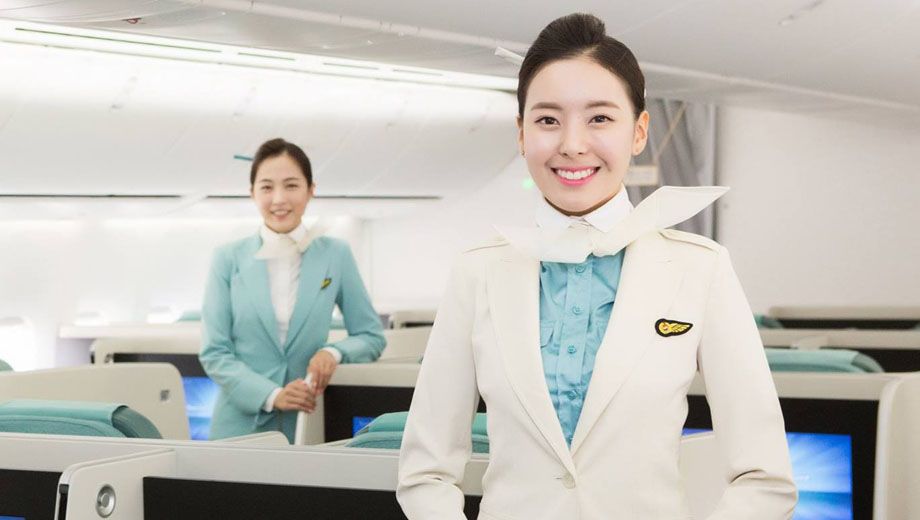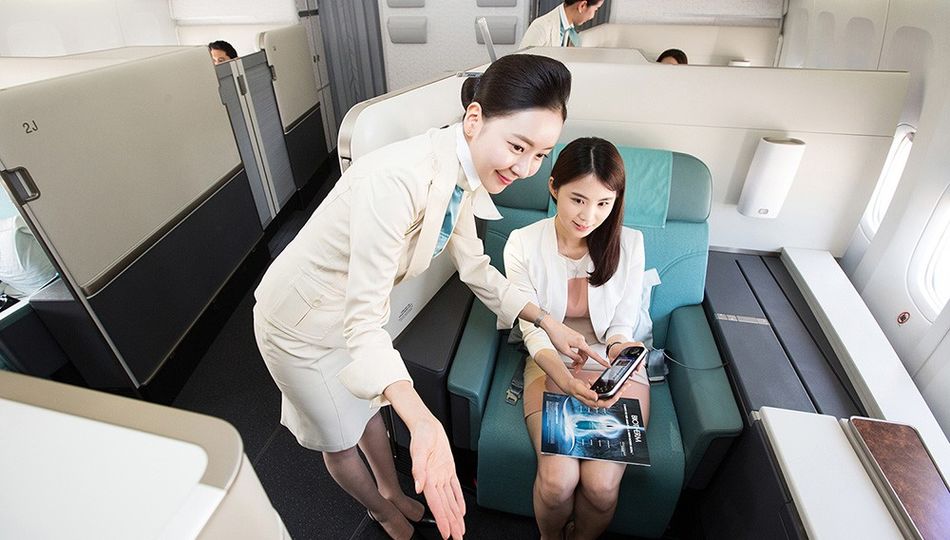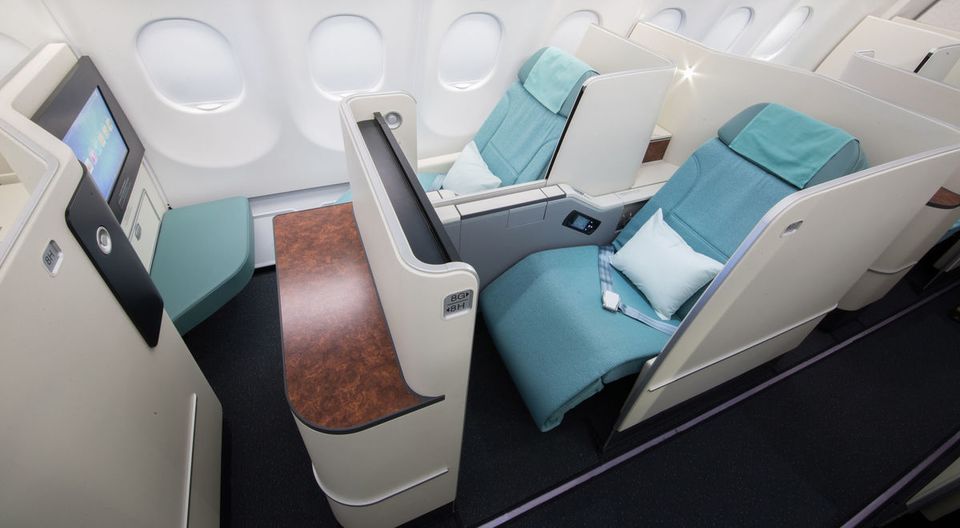Korean Air overhauls Skypass frequent flyer program
Korean Air is completely redesigning Skypass, including frequent flyer tiers and benefits, earning and spending miles, and more.

Korean Air’s Skypass frequent flyer scheme is in for a major reboot, with wide-ranging changes affecting the number of miles earned and spent on flights, through to a complete overhaul of the program’s elite frequent flyer tiers, including its lifetime statuses.
Here’s how the changes will affect you.
Earn more miles flying Korean Air business class, first class
Passengers travelling at the pointy end on Korean Air flights will aptly earn more points on many fare types after these changes kick in, for flights taken from April 1, 2021.
Those buying full-fare first class will earn 50% more miles than at present – with today’s Skypass earning rate of two miles per mile flown increasing to three miles earned per mile flown – while passengers on all other paid first class fares will earn 2.5 miles per mile flown, up from 1.65 miles today.
On international business class flights, the current earning rates of 1.25-1.35 miles per mile flown will, in most cases, increase to 1.5 to 2.0 miles earned instead, with fares sold under the lower-priced I, R and Z categories retaining their current earn rates.
Read: Korean Air Airbus A330 business class review
There’s also no change on full-priced economy tickets, although most other fares will earn miles at reduced rates: some dropping from 0.7 to 0.25 miles earned per one mile flown.
For domestic business class flyers, fares earning 1.25 miles today are boosted to 1.5 or even 1.75 miles earned per mile flown, again depending on the ticket type.
New Korean Air Skypass frequent flyer tiers
Elite status will be within easier reach of Korean Air’s Skypass members from February 1 2022 when the airline rolls out new Silver, Gold, Platinum and Diamond frequent flyer tiers.
Silver, earned after 10,000 qualifying miles or 10 qualifying segments, unlocks basic perks with Korean Air such as 23kg of extra baggage and 20% more miles earned on Korean Air flights, and one Korean Air lounge pass per year.
It also aligns with the SkyTeam Elite tier, providing priority check-in and boarding across the SkyTeam alliance, among other perks.
Gold status comes after earning 40,000 qualifying miles or 40 segments, and instead matches with SkyTeam Elite Plus: opening the doors to the airport lounges of SkyTeam airlines across the globe when travelling internationally.
With Korean Air, lounge access is provided to the next-best lounge based on the passenger’s flight that day: that’s the business class (Prestige) lounge if flying economy, and when flying business class, to the elite Miler Club Lounge in Seoul and Korean Air’s first class lounges in other ports where available, such as Los Angeles.
These members will also take home 40% more miles on Korean Air flights, and when spending their miles, will always be charged the airline’s much lower ‘off peak’ rates, even when travelling at peak times. ‘Reissue charges’ normally levied when changing a booking made using miles will also be waived.
Reach the lofty heights of Platinum after notching up 70,000 qualifying miles or 70 flight segments, enjoying all the benefits of the lower tiers, but with a boosted baggage allowance giving an extra bag of 32kg on Korean Air itineraries, and 60% bonus miles earned on Korean Air flights.
These members are also gifted one complimentary return flight upgrade per year on selected routes, stretching from Seoul as far as Honolulu or Jakarta – although not to Australia or New Zealand.
Diamond, Korean Air’s new top tier, can only be earned with 100,000 qualifying miles. In turn, you’ll get not only the same free flight upgrade as given to Platinum members, but a second return flight upgrade valid for any single route: including between Seoul and Australia, New Zealand, Europe and the United States, among others.
When travelling with Korean Air and departing from Seoul’s Incheon Airport, Diamond cardholders will always have access to the Miler Club Lounge even if travelling economy: an improvement over today’s access rules, which require even top-tier members to be flying business class for access.
Bonus points earned on Korean Air flights also rise to 80%, while Diamond members can nominate one family member for complimentary Silver membership.
Lifetime status will soon be closed to new members
Under the current system, the SkyTeam Elite Plus frequent flyer tiers in Skypass can only be earned on a lifetime basis after a serious amount of travel: at least 500,000 miles flown with Korean Air and its partners.
These tiers – Morning Calm Premium Club (at 500,000 miles), and Million Miler Club (predictably at 1,000,000), will both close to new members from January 31 2022, from which point, Korean Air will no longer grant lifetime frequent flyer status.
Existing lifetime elite members will be grandfathered into the new program, but their status will change on February 1 2022 to align with the program’s new tiers.
Morning Calm Premium Club cardholders will transition to Gold, and Million Miler members will become Platinum, and will remain at that tier for life unless qualifying for a higher tier based on recent travel.
Despite the change, these members will retain their SkyTeam Elite Plus status, so benefits when travelling with airlines other than Korean Air will not be affected.
Skypass yearly membership periods now fixed to the calendar
From February 1 2022, passengers who’ve earned elite status will find their card valid from February 1 each year until January 31 of the following year.
Status will be calculated based on the number of qualifying miles and qualifying segments earned per calendar year – that is, from January to December – with January given as a month to claim any missing flights from that period before the next year’s status is awarded.
However, it means that members who qualify for a new tier throughout the year won’t enjoy the benefits of that level until February 1 in the next year. Meet the requirements for Gold in July, for example, and it won’t be until February that your Gold card will arrive.
As the program remains unchanged until 2022, all flying completed throughout 2020 will continue to count towards the existing Skypass tiers as normal. Then, flying throughout 2021 will be assessed in early 2022, to determine which tier the member qualifies for at launch.
More Skypass miles needed to book most flights, fewer miles for others
Currently, Korean Air calculates the number of miles needed to book a flight based on the region the passenger is flying from and the region they’re ultimately flying to – for example, Oceania to Europe.
Under the new system – applying to all new reservations made from April 1 2021 – Korean Air will instead move to distance-based pricing: that is, the further you fly, the more miles you need. What’s more, each individual flight will be calculated and priced separately.
Here’s how that shakes out for passengers flying from Australia to Seoul (one-way), based on Skypass’ off-peak pricing as covers most of the year:
|
Route vs cabin |
Sydney to Seoul (today) |
Sydney to Seoul (Apr 2021-) |
Brisbane to Seoul (today) |
Brisbane to Seoul (Apr 2021-) |
|
First class |
80,000 miles |
120,000 miles |
N/A |
N/A |
|
Business class |
62,500 miles |
80,000 miles |
62,500 miles |
65,000 miles |
|
Economy |
35,000 miles |
40,000 miles |
35,000 miles |
32,500 miles |
While Sydney and Brisbane are both grouped into the same ‘Oceania’ region under the current arrangements, the move to a distance-based system will find Sydney-based travellers paying more miles per flight than their Brisbane counterparts, given the longer distance of the Sydney-Seoul route.
That said, many passengers taking connecting journeys will be better off under the new system with each flight calculated separately, with reductions to the number of miles needed to fly from Australia to New York via Seoul, for example (again, based on off-peak):
|
Route vs cabin |
Sydney-Seoul-NYC (today) |
Sydney-Seoul-NYC (Apr 2021-) |
Brisbane-Seoul-NYC (today) |
Brisbane-Seoul-NYC (Apr 2021-) |
|
First class |
240,000 miles |
255,000 miles |
N/A |
200,000 miles* |
|
Business class |
195,000 miles |
170,000 miles |
195,000 miles |
155,000 miles |
|
Economy |
110,000 miles |
85,000 miles |
110,000 miles |
77,500 miles |
*First class is unavailable between Brisbane and Seoul, but is available between Seoul and New York. With each flight segment being calculated separately, this figure is based on flying business class from Brisbane to Seoul, and first class onwards from Seoul to New York.
On peak travel dates, as determined by Korean Air every year, the number of miles needed also increases by 50% based on the figures above: that’s 255,000 miles for a one-way business class ticket from Sydney to New York via Seoul, for example.
Of course, Gold frequent flyers above will be immune from these higher peak prices once those new frequent flyer tiers are introduced, paying only the off-peak rates when redeeming miles for their travel.
Similar changes in mileage rates also apply to flight upgrades, which again move from being zone- to distance-based. Helpfully, when using Skypass miles to book partner airline flights, these will also be charged on a per-sector basis: versus today’s approach which charges members the price of a return trip, even if only flying one-way.
Round-the-world tickets are out, ‘cash and miles’ bookings introduced
From April 1 2021, Skypass members will no longer be able to book round-the-world itineraries using miles on Korean Air and its SkyTeam partner airlines at fixed, discounted rates – currently, 220,000 miles for business class and 140,000 miles for economy.
Instead, each flight will be priced separately as per Korean Air’s regular rewards tables, giving no advantage to combining these all on a single ticket, except for connecting flights to ensure bags can be tagged through and onward boarding passes issued without checking-in again.
Separately, Korean Air will introduce a new ‘cash and miles’ option from November 2020, giving the ability to use miles towards the purchase of a regular, paid ticket, starting at just 500 miles.
This option may be useful for those with a relatively small balance of Skypass miles who’d be unlikely to earn enough to completely cover a long flight like Australia-Seoul: instead cashing these in for a small discount on a future flight purchase.
As these are regular, paid flights, there are also no issues with reward seat availability, and no peak/off-peak pricing to worry about: as long as a flight can be purchased using money, miles can be used to help reduce the price.
For more information about Korean Air’s Skypass overhaul, head to the airline’s website.
Also read: Korean Air tips new business class, fleetwide inflight WiFi


Hi Guest, join in the discussion on Korean Air overhauls Skypass frequent flyer program